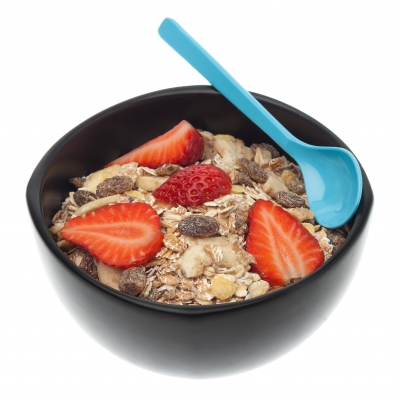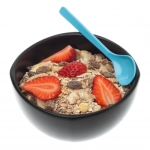10 Heart Health Facts and Myths

Much of what you think you know about high blood pressure, or hypertension, may be based on outdated information. “You may think, for example, that being diagnosed with prehypertension isn’t a big deal, especially if you’re in your 20s or 30s. You may feel fine. But we’re now learning that even slightly elevated blood pressure over a prolonged time can have serious consequences.
Felicia Stoler, DCN says science is evolving so quickly that it’s sometimes difficult to keep up with what we should and shouldn’t be doing to manage our health. Research on blood pressure is no exception. Here are the ten common myths Stoler hears most frequently.
Myth #1: Blood pressure in the 120/80 range is ideal.
Fact: “Just as over the years, health experts have dropped the acceptable limits with respect to cholesterol and blood sugar, the same is now happening with blood pressure. Experts are re-thinking what’s healthy. Too many people who have blood pressure in the 120/80 range are developing heart disease. What’s more: we’re discovering that young people are at greater risk for developing heart disease later in life than we once thought.
“The CARDIA study, conducted by researchers at multiple locations including Johns Hopkins University, Northwestern University, University of Minnesota and the National Heart, Lung and Blood Institute, followed nearly 2,500 healthy men and women from early adulthood (ages 18 to 30), for 25 years. The results revealed that those whose blood pressure was in the prehypertension range – between 120/80 and 139/89 – while they were still under 30, were more likely to have signs of heart disease when they reached middle age. Specifically, they were at higher risk of developing problems with their heart’s left ventricle.
“Results of the SPRINT study were presented at the American Heart Association annual meeting. In that study, about 9,300 participants were seen regularly for four to eight years by blood pressure management experts. Researchers determined that maintaining blood pressure below the commonly recommended systolic target of 120 significantly reduced rates of cardiovascular disease and lowered the risk of death among adults age 50 and older diagnosed with high blood pressure. As a result of this study, the American Heart Association now suggests that blood pressure of 120/80 is the new lower limit for hypertension.”
Myth #2: You’ll notice symptoms if you have elevated blood pressure.
Fact: “That’s the challenge with high blood pressure as well as high cholesterol. There may not be any noticeable warning signs, or they may seem so insignificant that you just ignore them. That’s why high blood pressure is often called the silent killer. For example, some people with high blood pressure may get headaches but attribute them to stress. Left unmanaged, high blood pressure can affect your overall health. That’s why even eye doctors and dentists will check your blood pressure during your appointments.”
Continue reading
Lower Cholesterol at Every Meal, Every Day

High cholesterol levels increase your risk for heart disease. Felicia D. Stoler, DCN, the author of “Living Skinny in Fat Genes”, shares some fresh ideas on how you can lower cholesterol at every meal.
Lisa Nelson RD: We can now find many grocery options with “cholesterol free” labeling. What does “cholesterol free” mean?
Dr. Stoler: In a nutshell, a food that says it is “cholesterol free” means it has NO animal products in it. It’s a bit misleading… for example, apples can say they are “cholesterol free”.
Lisa Nelson RD: Should consumers disregard “cholesterol fee” labeling? If so, what should they look at instead when selecting heart healthy products?
Dr. Stoler: I always tell people to look at calories, fiber, and fat. If it’s a food that has fiber, does it have the most (across brands) fiber per serving. When it comes to fat, does it have lower fat than other comparable products?
Lisa Nelson RD: What are some great breakfast tips to promote lower cholesterol levels?
Moms and dads: Are your children getting enough fiber?
 From keeping our immune system functioning to bowel regularity, our digestive systems do a lot for our everyday health.
From keeping our immune system functioning to bowel regularity, our digestive systems do a lot for our everyday health.
Dietary fiber as a regular part of your diet will promote lower cholesterol levels and improved heart health. Most of us consume about half of the fiber our bodies need to function correctly.
If we include fiber in the diets of our children now, we can make it a natural habit they continue into adulthood.
I asked registered dietitian Felicia D. Stoler, DCN, how parents can get inventive about ways to increase our family’s fiber intake. Stoler is the former host of TLC’s “Honey, We’re Killing the Kids,” and author of “Living Skinny in Fat Genes.”
Lisa Nelson, RD: How much fiber do we need?
Dr. Stoler: “Toddlers ages 1-3 need 19 grams of fiber daily. Children ages 4-8 years need 25 grams, about the same as adult women. Teenage boys and adult men should aim for 38 grams per day. That fiber requirement probably won’t be met by eating fast food. “A four-piece serving of chicken nuggets has just one gram of fiber. A six-inch turkey breast deli sandwich only has three grams.”
Lisa Nelson, RD: How do you get around the idea that a high-fiber diet means piling plates high with vegetables?
Dr. Stoler: “Sometimes playing ‘hide the fiber’ is the best way to improve a family’s nutrition.”
Lisa Nelson, RD: Can you give me some examples?
Dr. Stoler: “I’m always tossing ground flax seed into foods. One of my favorite tips is to use it as a thickener for tomato sauce or soup. Serving a lot of side dishes is a great way to load up on vegetables or grain-based foods. Along with a main course of poultry or fish, I prepare a lot of side dishes with beans, lentils and multiple grains. For flavor and color this time of year, toss in some cranberries.”
Lisa Nelson, RD: What about giving the family a high-quality fiber supplement?
Dr. Stoler: “I keep Sunfiber on the kitchen counter so it’s very convenient while I’m cooking. Since it’s odorless, tasteless and mixes easily into just about anything, it’s routinely my secret ingredient in a lot of foods from pancakes, waffles and muffins to chili, soup and yogurt. One scoop adds six grams of fiber, which is significant. It also helps support your family’s bone health because it supports better calcium and magnesium absorption.”
Lisa Nelson, RD: How can you add more fiber to kids’ party foods, especially if the event is at someone else’s home?
Dr. Stoler: “Offer to bring a snack for fall get-togethers. Kids go crazy for fruit kabobs. Just thread fresh melon balls onto wooden skewers. Then flip over half of the empty melon shell, and stick the skewers into it for a festive presentation. If you’re short on time, buy the pre-cut melon and stick the skewers in a Styrofoam ball from the craft store or invert a colander. When fruit is presented in an enticing way, people want to eat it.”
Lisa Nelson, RD: Do you have other creative tricks for getting kids to eat healthier?
Dr. Stoler: “Make sure plates are filled with colorful foods. Food that’s appealing stands a greater chance of getting eaten. Use cookie cutters to cut sandwiches made with high-fiber bread. Use a vegetable peeler to cut carrots or cucumbers into ribbons. Experiment with cutting other vegetables into fun shapes.”
Lisa Nelson, RD: What do you suggest for a high-fiber, family dessert?
Dr. Stoler: “Dress up fruits for dessert. The beauty of high-fiber desserts is that they fill you up, especially if you slow down and savor each bite. So you won’t be as tempted to over-indulge. Frozen grapes are fun and easy. Fruit cobblers are also a good choice for chillier evenings, especially if you sprinkle some Sunfiber into the mixture before baking. Making it with an oatmeal topping will add even more fiber and nutrients.”
Lisa Nelson, RD: Do you have any other suggestions for parents to encourage their kids to start eating more vegetables?
Dr. Stoler: “Include your children in creating menus, grocery shopping, gardening, setting the table and food preparation. “This may not only broaden their interest in trying different foods, it can also teach them important life skills around food such as budgeting money and time management skills. Passing on your knowledge will help them to be great parents!”
Dr. Stoler adds that Sunfiber, which she referenced, is well researched for its health benefits. Those studies are available at www.Sunfiber.com.
You can also access the free ecourse How to Lower Cholesterol in 8 Simple Steps at http://lowercholesterolwithlisa.com.
All the best,
Lisa Nelson RD
Image courtesy of phasinphoto / FreeDigitalPhotos.net




